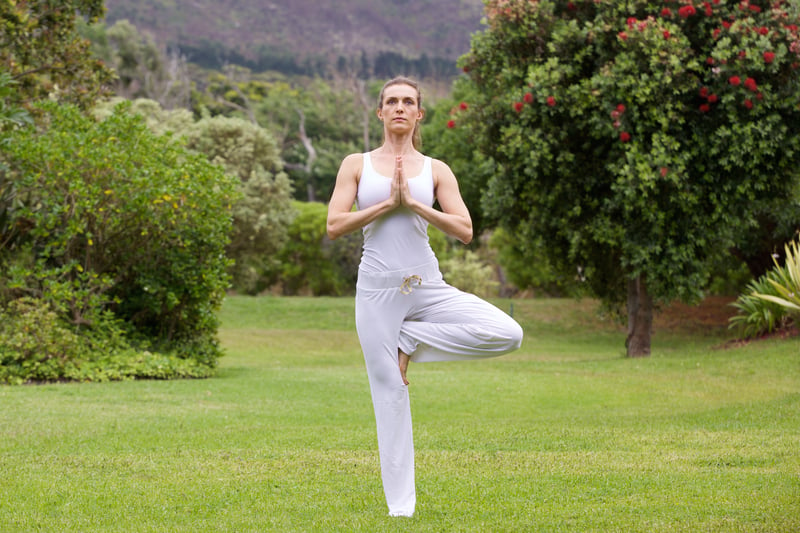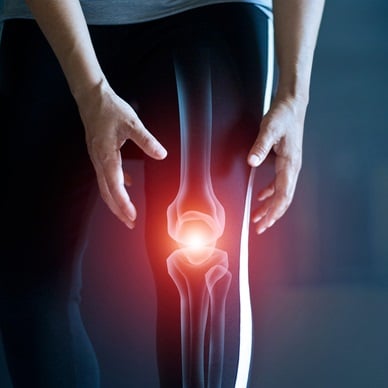Can 1-Legged Balance Predict How Long You’ll Live?

Hey, do you have 10 seconds to spare? Of course, you do. And 10 seconds may be enough to tell you how likely you are to die in the next 10 years, at least according to one new study. Here’s all you have to do: Grab a stopwatch and time yourself balancing on just one foot, with your foot touching the calf of the standing leg—a bit like a flamingo. Just to be safe, have something to grab onto, if need be, so you don’t fall over. And that’s it.
Balance and Aging
According to this study from the British Journal of Sports Medicine, once we reach our mid-50s, balance starts to diminish.1 This decreased balance, in turn, increases the risk of falls and other issues. The researchers assessed the 10-second one-legged stance (also known as the “flamingo balance test”) and how it is associated with all-cause mortality (i.e., early death) and found those who can’t balance for the full 10 seconds without grabbing onto something are nearly twice as likely (or 1.84-fold) to die within the next decade.
The researchers asked 1,703 individuals who were able to walk steadily, aged 51 – 75 (average age of 61), to volunteer for the study. Overall, 20.4% of the people (i.e., 1 in 5) failed and couldn’t balance on one leg. Those most likely to fail included those with weight issues (e.g., overweight or obese) or health complications like diabetes.
During the seven-year follow-up, 7.2% of study participants had died of various causes. Interestingly, only 4.6% of those who could balance passed away compared to 17.5% of those who couldn’t.
Even when adjusting for age, sex, body mass, and comorbidities (like high blood pressure, heart disease, or diabetes), the risk for early death was higher for those with less balance. This makes a lot of sense as poor balance is linked to fragility and decreased fitness levels, which may indicate reduced health.
While strength, aerobic fitness, and flexibility are all excellent tools to measure overall health, standing on one leg is a physical test that’s super easy to include in routine examinations to help determine the health status of middle-aged and older individuals. If you are under 70 years old, you should easily be able to complete 10 seconds, according to the study’s authors. And for those who are older, your superior balance provides an advantage over your peers.
This is important as falls are a significant factor in death for individuals over 75, and those deaths have been increasing in the U.S., according to a 2019 report.2 Standing on one leg requires not only good balance but brain function, muscle strength, and blood flow, which is why it appears to be so revealing.
RELATED: Collagen Doesn’t Work (Unless…)
How to Improve Your Balance
You don’t have to wait to take this physical test until your next doctor’s visit. You can do it right now. Better yet, it’s easy to add to your routine for an occasional home checkup and to improve your balance. Just stand on one leg as you brush your teeth, wash dishes, while working at a standing desk or watching T.V., or even while waiting in line at the grocery store to check (and improve) your balance. You can do this barefoot or when wearing comfortable tennis shoes. It’s never too late to improve your balance, it takes mere seconds per day, and you can fit it into everyday activities, so it’s simple.
Other ways of improving balance include a well-rounded yoga practice or using a wobble board or balance board. But just walking, especially in areas where the ground isn’t completely level, can also help you improve your ability to balance, so you’re less likely to fall.
Anything that gets you standing, rather than sitting, should help improve your balance as well as core and leg strength.
Similar Balance Tests to Try
Other researchers have suggested similar tests. If you have a few minutes, you can stand on each leg for 20 seconds both with eyes open and with eyes closed. In this instance, the Japanese study found those who struggled to balance for the 20 seconds were more likely to have a stroke as balance is a good indicator of brain health. 3
Other tests have looked at walking speed (slow speeds are associated with cardiovascular risks), 4 the ability to go from sitting on a floor to standing up (without using your hands), 5 and grip strength 6 to provide clues on how healthy you are.
These types of tests aren’t the end all, be all. They’re observation studies, which don’t necessarily determine why people are more or less healthy. That said, standing on one leg certainly is one of the simplest, easiest, and most convenient ways for most of us to find a baseline and keep track of improvements at home.



 US Doctor: "Eating This Every Day Can Snap You Into Ketosis"
US Doctor: "Eating This Every Day Can Snap You Into Ketosis" 3 Key Nutrients to Help Lubricate Your "Tin Man" Joints
3 Key Nutrients to Help Lubricate Your "Tin Man" Joints AVOID Plant-Based Protein Powders (unless...)
AVOID Plant-Based Protein Powders (unless...)

